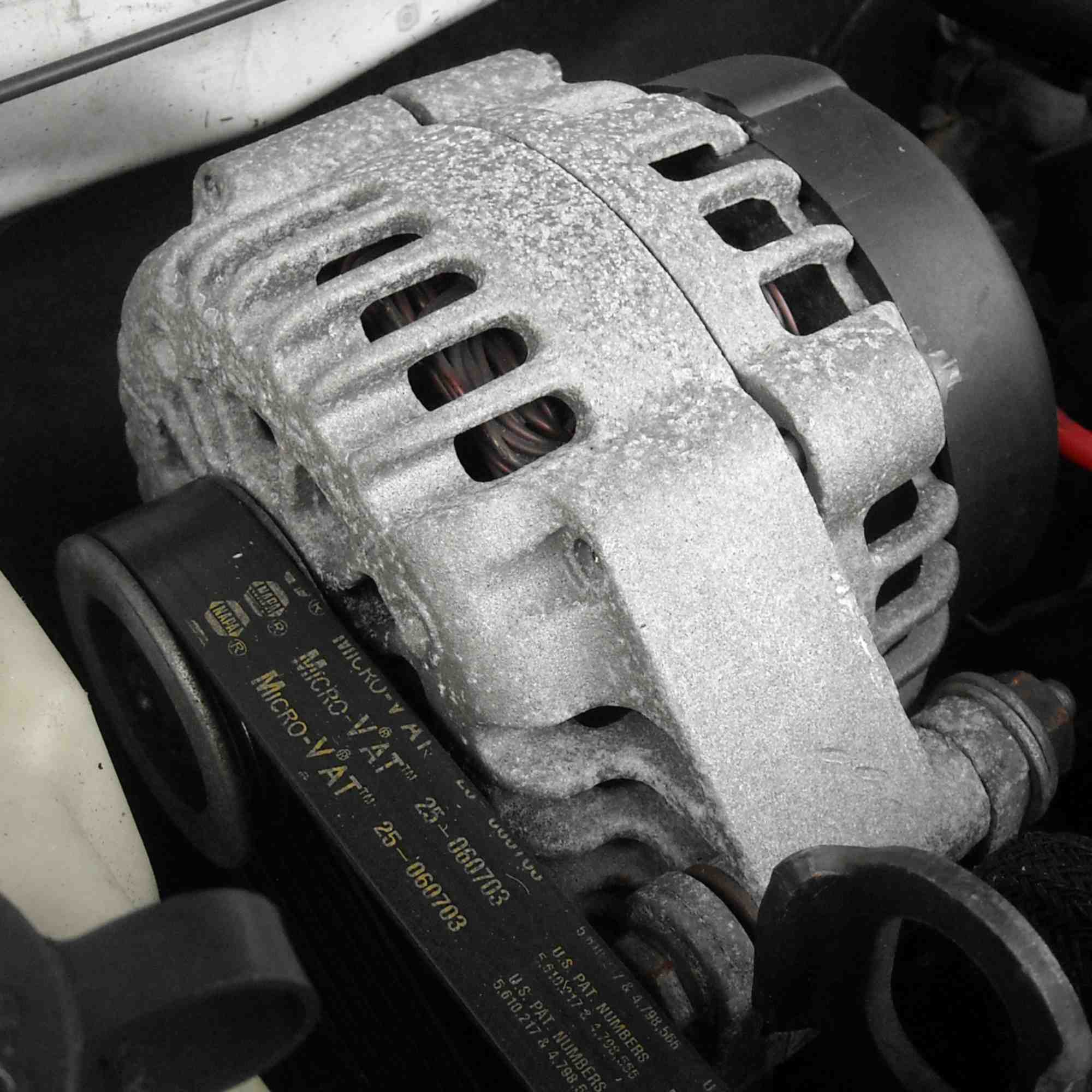A vital part of any vehicle's electrical system, the alternator generates electricity for both the engine's ignition system and the vehicle's entire electrical system. Some of the engine's power is used to turn a set of electromagnets in the alternator, which, when passed by the wires inside the alternator, generates electricity. The amount of electricity made depends on the engine's speed and the size of both pulleys involved (the crankshaft pulley and alternator pulley).

Prior to the 1960s, automobiles used direct current generators with commutators. When diodes that were durable enough for under-hood conditions became priced reasonably enough to use, automotive manufacturers switched to using alternators. Chrysler was the first to mass-produce a vehicle with an alternator (the 1960 Chrysler Valiant), and the Ford Model T was the first car to experiment with the use of an alternator.
Parts of an Alternator
Although the alternator itself is considered a part, there are many parts within an alternator.
Outer Shell
The outer shell of an alternator is usually made up of two aluminum housing pieces with vent openings to allow cooling. The two pieces are called the drive-end shield and collector ring end shield. Many alternators have an additional protective cap for the electronic components outside the metal casings.
Pulley
The engine sends its rotational energy to the alternator via a belt to the alternator's pulley. The diameter of the pulley affects the speed that the alternator rotor spins, relative to engine speed; a smaller pulley allows the rotor to spin faster than a large pulley would.
Stator
The stator is a solid piece which stays stationary within the alternator. It has copper windings which direct the flow of electricity.
Rotor

The rotor spins within the alternator, interfering with magnetic fields in order to produce alternating current. The rotor is attached directly to the pulley, and rides on at least two roller bearings.
Rectifier
The rectifier contains the diodes and any other electronic components the manufacturer chooses to add. Most rectifiers are contained within a plastic cap outside of the metal shell, and have a heat sink to cool off the heat-producing electronic components.
Wye Configuration
A wye configuration alternator has the coils connected in a triangular pattern so that the coils can form a loop.
Delta Configuration
A delta configuration alternator has coils with one common end and the other ends head to the rectifier.
Generators
Early vehicles used a generator instead of an alternator. This produced DC current, but would put out different amounts of power depending on the speed it would rotate.
Testing an Alternator
Replacing Alternators
Alternators are sometimes easy to replace, but it depends on how much is in the way when you lift the hood or get under the vehicle. The battery should be disconnected before working on the alternator, because it is connected to both the positive and negative sides of the battery. An alternator typically has a plug with small wires, a large positive wire bolted on, and at least two bolts holding the alternator to the engine.
Decoupler Pulley Replacement
A decoupler pulley may require replacing, which may require special tools and the removal of a one-time-use seal.
Gates Alternator Decoupler Pulley Removal Video
Alternator Replacement Options
Beyond the typical options of different brands available, alternators are also typically available as either new or rebuilt/remanufactured. A remanufactured unit has varying amounts of internal parts replaced, and typically at least has a used case.
Higher Amperage Alternators
Sometimes a larger, higher amperage alternator is available. This is typically the case when a manufacturer has an engine that they want to put into something that the original alternator can't handle the electrical load of, such as a limo or ambulance, and they design a new alternator that fits where the old one did. Typically these will bolt on and plug in, but wiring may have to be upgraded to prevent other electrical issues.
